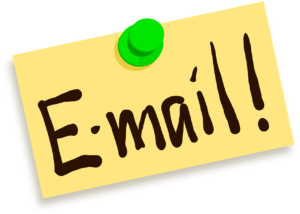How A Change In Thinking Can Lead To Great Results For Your Business

What can a positive mindset do to your business? Here are some of the best benefits!
There is one characteristic that all successful people have in common – they have a positive mindset that allows them to challenge and adapt to changes in their environment. People say that business leaders who succeed are often the products of failures, and this can be true in many ways.
Evan Williams, for example, had a failed podcasting company before co-founding Twitter. Reid Hoffman, co-founder of LinkedIn and investor in PayPal and Airbnb, had a failed dating and social network.
These entrepreneurs didn’t stop after failure, they kept on going because they had a positive mindset that allowed them to analyse where failings had occurred and then changed their processes to succeed next time.
The Positive Mindset
The positive mindset is not someone who is optimistic without reason. They don’t just hope for the best and wait for opportunities to happen, as this could make you oblivious to challenges your organisation could face and you could lose awareness of the market around you.
Instead, someone with a positive mindset believes that good things can happen for themselves but instead of ignoring obstacles to their success, overcome challenges with unique problem-solving skills.
How Does A Positive Mindset Improve Business Results?
Research has found that a positive mindset has numerous benefits. Here are some of them:
More Energy
Scientists call positive attitude a dispositional effect. Those with a positive attitude tend to have higher levels of energy and enthusiasm making them more productive.
However, that doesn’t mean that those with a negative disposition are bad for business. In some cases, they are necessary as just the right amount can give someone a calm and relaxed personality – just what you need in a crisis.
Better Problem-Solving Skills
Those with a more positive outlook have a greater capacity to take on new information. Therefore, they can actively change their perception of a problem and the ability to find new solutions to solve them.
In today’s modern, rapidly changing business world, this skill is of high value.
Able To Deal With A Crisis
There is a lot to worry about in business, for example the growing threat of cybercrime, losing a key client, or a great employee handing in their notice. When something unexpected happens that could ruin your plans there are two types of reaction: a positive – get on with it attitude, or a negative panic mode.
A positive mindset allows you to be more positive and tackle the challenge without wasting time on worrying about the ramifications of the unexpected event. It allows you to solve problems faster and move onto the next order of business.
It Promotes Positive Attitude Among The Team
A positive mindset and outward appearance is infectious. Your team will gain the same energy and outlook as you have with a positive attitude. This will increase the business’ productivity and the team’s quality of work.
It will also lower staff turnover and increase cohesiveness between team members.
Conclusion
Your business’ success depends on many aspects, some of which will appear unrelated, but a positive mindset can help improve the chances of good things happening to your business.
This, in turn, should help lower costs and improve profits; allowing you to invest in business improvements.
What are your tips for a positive mindset? Do you have experience of a positive mindset for improving your business performance?
Let us know in the comments below.
Read post Post a Comment. Tagged in: business advice, business tips, postive mindset
How Unconventional Solutions To Marketing Can Really Work

Unconventional marketing can sometimes be the spice to attract customers to your brand.
Marketing is an important part of your business’ growth. However, with so many companies conducting campaigns every single day – consumers can often become bored. Therefore, the best marketing campaigns can be a little unconventional.
Unconventional Ideas That Worked
Cards Against Humanity are experts at unconventional marketing ideas. One year, on Black Friday, instead of following the traditional trend of lowering costs, they increased them by $5. This strategy increased sales on the day and for a period afterwards.
Another year on Black Friday, the company invited customers to buy nothing for $5. The campaign raised $71,000 on the day, with some customers making multiple purchases. The company split the money between members of the team; most of whom donated the funds to charity.
Rudy’s BBQ demonstrated that you don’t have to be a big or global business to be successful at unconventional marketing either. They regularly use negative statements to promote their brand. One billboard expressed they were the worst BBQ in Texas while another misspelt sauce. They also regularly engage audiences on social media – even when they are in one of their restaurants.
Despite these negative terms within their marketing slogans, trade is high, and they have numerous positive reviews online. It has also helped them grow from one to three sites.
Why Does Unconventional Marketing Work So Well?
The two examples show exactly how unconventional marketing can improve sales. Both present an inverse of an established trend such as a seasonal sale or the positive re-enforcement of a brand’s service.
Yet, both businesses succeed.
One of the main reasons for this is because unconventional marketing disrupts normal consumer expectations.
The human brain is conditioned to identify patterns, so people expect to see certain marketing promises and slogans. Therefore, audiences tend to ignore much of the marketing materials presented to them.
However, unconventional tactics break the familiar pattern. This forces the audience to examine the marketing literature presented more closely.
As they pay more attention; the audience remembers the brand more effectively.
In addition, thanks to social media, unusual and humorous items are shared more frequently. Therefore, the reach of such campaigns can grow organically. The more people that see your marketing materials, the greater the sales.
Finally, consumers sometimes want to test your assertions. If you claim to be the worst, they’ll want to see for themselves.
Unconventional Tricks You Can Make
The above two examples aren’t the only unconventional tactics you can try. There are numerous other tactics you could use; here are some examples:
Weird Discounts: You don’t have to increase prices to stand out in a sale. Most discounts are presented as a multiple of five (5%, 10%, 15%, etc). Instead, try for a different discount like 6.22% or 10.91%; something that is a little more unusual. These tend to work because the consumer concentrates more on the fraction rather than the whole number.
Market Another Brand: Create another brand and market that one. An excellent example of this would be Compare The Market. They advertised Compare The Meerkat instead, where a loveable meerkat would complain about all the people accidentally landing on his site instead of Compare The Market. The campaign took off so much that even after several years the characters are still around.
Send Them Cake: If you’re a local brand, and you have a marketing list, why not send a small gift. Cakes, doughnuts and flowers are typical options, but you can be creative.
Conclusion
Sometimes typical marketing tactics just don’t work. Instead, you have to be a little less conventional to grab the attention of your target audience. Unconventional marketing can take many forms and is only limited by your imagination.
What unconventional marketing tactic have you tried? What will you try next?
Let us know in the comments below.
Read post Post a Comment. Tagged in: marketing, Online Marketing, unconventional marketing
What’s In A Name? 8 Personalised Email Examples You’ll Love

Email personalisation can really support your business’ growth.
Personalisation is the key to email success. People want to feel that marketing messages aren’t just offering them relevant products, but the message has been carefully created just for them. Personalization, according to some research, can increase open rates by 244% and click-through rates by 161%.
There are many different tactics for personalization you can use; some are complex, while others are less so. Here are eight examples of personalised emails for you to look at and consider.
1. JetBlue – Anniversaries
JetBlue has a unique approach; they purposefully send an email after you’ve been subscribed to their mailing list for one year. It’s an interesting concept that gets you thinking about the relationship you’ve built up with them over the year.
They even play on the traditional anniversary jokes such as forgetting, who’s buying the presents and that time you didn’t talk to them.
2. Amazon – Recommended Products
Amazon is an expert at personalised emails. They use your account’s browsing history to send you product suggestions for products that might be suitable considering what you have previously been looking for.
Amazon often sends these to customers within two to three days. They also send cart reminders to get you to complete transactions.
3. LinkedIn – Job Opportunities
LinkedIn has always been about the career opportunities available. Therefore, LinkedIn often looks at your experience and then matches your experience and qualifications against job opportunities other organisations have posted on the site.
These emails are sent roughly once a week and don’t require the reader to buy anything – which makes them effective and boosts the value of their job posting services.
4. Twitter – Recommendations
Twitter is a social media site that sends numerous personalized messages. Firstly, they send messages to remind you of the content that is available on the network from those who you are following and often interact with the most.
They also provide information about potential people to follow. And Finally, you could receive emails regarding the promotional opportunities available to your business.
5. Hawaiian Airlines – Birthday Wishes
Birthday wishes are a good way to show that you care about your subscribers. Hawaiian Airlines send out birthday wishes. They also offer subscribers a chance to earn 500 extra airline miles should they book within one year.
This email demonstrates intricate knowledge of the subscriber, which can be endearing, and adds a reward for interacting with the brand. There is also an element of gamification which is very attractive to most customers.
6. Netflix – Recommended Watching
Netflix is great at sending recommended watching emails to customers. They base their recommendations on previous watching history and will send details of films or television programs when they’ve been released.
The emails even have functions for the receiver to add the program to their list of favourite programs or to watch now. An additional function on the email is that subscribers can see similar programs to the one they are recommending.
7. Birchbox – Hello You
Birchbox is a company that loves to get personal. Their emails always start with the subscriber’s name and then they add on the number of reward points they have collected so far.
The products that are recommended to the subscriber are also based on their previous purchase history; this gives the best impression that the email will recommend products that are relevant.
8. Facebook – Event Trigger
Facebook is good at sending emails based on actions you’ve taken. For instance, if you don’t log into your account for five days, they will send you an email to remind you about your account.
The network will also send an email if you log back in after a length of time.
Conclusion
Personalization will get your email marketing campaigns more returns. There are many options for personalization, and not just including their name in the email. What personalisation will you use in your next campaign?
Let us know in the comments below.
Read post Post a Comment. Tagged in: email personalisation, email success, personalisation
How To Enhance Your Target Engagement Using Video Thumbnails

How can you iincrease engagement rates with your videos?
Videos are an important part of your digital marketing mix. One-third of all time spent online is spent watching videos, and the ability of videos to convert watchers is unprecedented.
A video on a landing page can increase conversions by 80%, and audiences are 64% more likely to buy an item online after viewing a video.
Videos embedded within your emails can also increase click-throughs by up to 300%.
However, many small businesses (just under 80%), don’t utilise any video marketing. This can seriously affect their online success.
It Isn’t Just Shooting A Video
Once you’ve committed to video marketing, you need to find a place to host them. Unless you have a high-powered server, your own website is not a good option. They will just slow down your website too much. That is why a video sharing website, like YouTube or Vimeo, are better as these videos can be embedded into your website or email template.
YouTube is also great for helping you with your website’s page rank on search engines.
However, just uploading a video isn’t going to get you success. There are many elements to a successful video marketing campaign. First, each video needs to have a keyword orientated description written that needs to be about 300 words.
Then, all videos with speech should include closed captions.
Finally, you should consider a unique and custom thumbnail.
What Is A Video Thumbnail?
A video thumbnail is an image that represents the video to internet browsers or email subscribers. It is the first thing they will see, and most will make their decision about whether to watch a video or not based on the look of the thumbnail.
When uploading to YouTube, your videos will be scanned, and YouTube will give you the option of three video screenshots to represent your video. These can be then used to promote your video on the channel, and anywhere you embed your video.
However, generic or autogenerated thumbnails are always great for video promotion. In fact, YouTube states that 90% of their top performing videos and YouTubers use custom thumbnails.
There are several reasons for this:
- Autogenerated thumbnails can seem randomly selected and can sometimes look unprofessional.
- You can design custom thumbnails, so they have the best graphics, your branding and call-to-action to engage with users.
- It demonstrates you’ve taken the time to develop your content and therefore, it will be perceived as being higher quality.
How To Develop A Custom Thumbnail
Developing a custom thumbnail for your videos isn’t challenging. All you need is a camera and Canva, a free graphic design program online.
First, take an image that will represent your video. The best custom thumbnails contain these aspects:
- Great colours.
- A face.
- Action shot.
Next, go to Canva and sign in. Then create a new custom image that is 1280 pixels by 720 pixels.
Upload your image and drag it into the editing area on the right-hand side.
Then add some text and branding.
Then you can download your video and upload it to YouTube or other video sharing website. The only issue you might have is that your image when downloaded from Canva can be greater than the 2MB limit YouTube sets for custom thumbnails. However, using another free tool, RIOT, you can reduce the file size down significantly to match their requirements.
Once uploaded, you have a custom thumbnail that will display everywhere you’ve embedded your video, including in email marketing communications.
Conclusion
Video marketing is important and can be a useful addition to email marketing campaigns. Emails with videos have better click-through rates and lead to a greater number of enquiries or direct sales.
The most successful videos are those which contain custom thumbnails, the image that represents the video when it is not playing. These can easily be produced, but there are key considerations for developing the best custom thumbnails.
If you match those requirements, your videos will be watched a lot more.
Do you use video marketing in your campaigns? Do you include videos in your email marketing campaigns?
Let us know in the comments below.
Read post Post a Comment. Tagged in: email design, youtube, youtube thumbnails
7 Of The Most Brilliant Holiday Marketing Campaigns Ever

Get the most out of your holiday season and start planning your marketing campaign now.
The holiday season often provides us with examples of the best marketing campaigns. While some campaigns will be created by large organisations with significant budgets, there will still be aspects even the smallest companies can learn from.
So, what are seven of the most brilliant holiday marketing campaigns ever? Here is our list.
1. Coca-Cola And The Peace In The Mall Advert
Coca-Cola might be more famous for the polar bears sharing a bottle of the soda drink, but recently they took a different turn. In this holiday campaign, they had a video of two people fighting in a mall over a jacket. They called peace to enjoy Coca-Cola products together.
This advert plays on a lot of holiday elements, including the concept of peace on earth and how lots of people feel about shopping during the holidays.
2. WeWork
Business service providers often find it challenging to pull off holiday marketing campaigns. However, WeWork, the co-working and office space provider, discovered they could find a campaign that worked well.
It started with four articles in their magazine, Creator. In the articles, they discussed the best holiday gifts, and each had a theme such as the personal touch, family, digital nomad, etc. Each of the products featured in their articles was from a WeWork member company. This helped to support its community of creators.
To grow the campaign and spread the word of their gift guide they created their own hashtag #wwgiftguide, which became the driving force behind their campaign.
3. Dollar Shave Club: Holiday Shave Set
The Dollar Shave Club are not shy of changing the marketing landscape, and their previous campaigns have demonstrated creativity, humour but also careful marketing. One holiday campaign certainly stood out.
By incorporating typical Christmas traditions like the ugly sweaters against their holiday products and how they can spice up the standard holiday monotony, Dollar Shave Club created a memorable advert.
The video itself, whether advertising anything or not, was perfect because it was funny enough that it encouraged shares. Therefore, the visibility of the brand name grew with little additional effort.
4. Microsoft Making Peace
Microsoft took a similar approach to Coca-Cola above by having a video that markets the goodwill that should be shared by all during the holiday season. However, instead of being between two customers, it was between them and their rivals: Apple.
The advert starts with employees leaving their store to deliver a special message to their Apple store counterparts down the road.
The message is not just poignant for the season, but with the children singing carols in the background, there is a cute element that plays on holiday memories for many.
5. Starbucks And The Red Cup
While some campaigns only run for one or two years, Starbucks often run a similar campaign every year: their red cups campaign. When one year they had plain cups, there was outrage from fans.
Part of their marketing campaign was to ask customers to create images representing their red cups. The best images were declared winners – adding a gamification aspect to their holiday campaign.
6. John Lewis Presents Buster The Boxer
The 2016 holiday ad for John Lewis featured Buster the Boxer. The dog became popular around the world and soon became an online hit.
What is special about their campaign is that the brand didn’t just use it for their TV commercial or social media – but they had an entire section of their online store dedicated to Buster and his friends.
As part of the campaign they had an interactive video where you could explore Buster’s garden. Their campaign was successful because it was funny, heart-warming, and interactive.
7. Melanie Duncan And Holiday Marketing Tips
One of the top marketers on the net is Melanie Duncan. To keep her marketing momentum going through the holiday season, she had a perfectly planned series of blog posts and marketing emails.
The campaigns started early in the fall with an article about creating success in the next year. Then she moved her articles onto Christmas and how readers could plan their own holiday campaigns.
The beauty of this campaign was that Melanie Duncan published all of the articles before Halloween. Therefore, readers were given plenty of time to act upon her advice.
Conclusion
Holiday marketing is highly valuable. Many consumer markets make the majority of their sales during this period, and it can be very competitive. If you want to achieve success this year, you should plan a great holiday campaign months in advance. That is why you should be thinking of Christmas now.
Have you started your holiday planning? What campaigns have you done in the past?
Let us know in the comments below.
Read post Post a Comment. Tagged in: Holiday Campaigns, Holiday Marketing, Online Marketing
Download Free Solutions – Keeping Your Small Business Cleaner And Easier To Maintain

Don’t let your desk become cluttered.
When it comes to running your business, there are two things you need from your software. Firstly, it should make it easier for you to run your business, and secondly, it should be cost effective. And nothing is more cost-effective than free.
An efficient, free tool can help you maintain a cleaner business. For instance, some social media management programmes can give you all the information you need to manage your updates in one place and see how the audience is reacting.
Therefore, you can devote more time to other vital business activities such as completing business improvement initiatives or meeting new clients.
So, what solutions are available for small businesses and how can they support you?
1. Hootsuite
Hootsuite is one of the best social media management systems available online. It is often ranked highly by experts and many small and large businesses use it to publish on, and monitor their social media accounts.
A free account on Hootsuite offers a lot of management options. You can control three profiles from many social media networks (even two or three on the same network).
Each page can have up to ten streams that can monitor your updates, search results, social interactions, and new followers. Therefore, from one screen you can monitor all the activity of any profile.
Hootsuite also enables you to schedule updates to be released at a future date. Hootsuite can even set the time and date for you, based on start and finish times you set. Hootsuite can really help you grow a following and develop your brand.
2. Open ModelSphere
This open-source tool is used for modelling data, processes and producing UML diagrams. It allows you to look at your business’ processes and see where there might be bottlenecks and value-deficient processes within your systems.
Open ModelSphere can run on any platform and interact with other databases so using it doesn’t require new systems to be created.
The open-source nature of the software also means you can develop it, so it’s perfect for your business. And, if you need some help, there’s even a developing community on LinkedIn for support.
3. Google Docs
Google Docs is one of the best ways to share your documents online. You can create word documents, presentations, and spreadsheets, and then invite people from anywhere in the world to view or edit your documents.
This makes the system ideal for those who work with remote teams.
Another useful feature for Google Docs is that you can edit the document while someone else is reading it, and they can see what changes you are making. This is perfect for collaboration and development of documents.
4. DropBox
A free account on Dropbox allows you to share your documents with members of your team and not have to email them to everyone. This is particularly useful when you are sharing information that doesn’t require a personal response.
5. Fluttermail
While not free, Fluttermail is one of the best email marketing systems available to small businesses. We offer a wide range of tools and systems to help you optimise your email marketing campaigns to earn more revenue from each email you send out.
Our charges aren’t expensive either. For just $17, you can have 1,000 subscribers and access to all our features.
Using a web-based email marketing service allows you to store your list away off your server, keeping it free to manage your normal email operations.
Also, web-based email marketing services can give you great information on how your campaigns are performing – helping you to be better at recognising sales opportunities.
Conclusion
Keeping your business clean and easy to maintain can be challenging, but with the right tools, you can focus on other essential business tasks that support the growth of your business.
How do you keep your business clean and easy to maintain? What tools do you use?
Let us know in the comments below.
Read post Post a Comment. Tagged in: business advice, business tools
What Small Businesses Can Expect Of Technology In 2017

What technology can help your small business?
Every year, many new technologies enter the market. Some of these will be of use to small businesses and will help them grow, cut costs, or interact with customers in new and exciting ways.
So, what are the technologies your small business should be on the lookout for, and how will they benefit you?
1. Security
The battle between cybercriminals and security services continues as the former are becoming ever more sophisticated. This means that there will be new technology to support small and medium businesses in their efforts to protect themselves from cyber-attacks.
Many businesses in the past year have experienced a breach. The smaller the business, the harder it is to recover, so new technology to protect you should be a welcome relief.
2. Real-time Analysis 24/7
Today’s technology collects a lot of data, and in the past, there may have been a delay in its analysis. Now, with the latest monitoring tools, your business can have the data in real-time. This means those in senior positions can make decisions with the best data available, reducing mistakes and taking full advantage of opportunities.
For email marketers, it does mean they’ll be able to see who is interacting with campaigns and what actions they are taking. Perhaps this will mean personalised offers being given to leads, or adjustments being made promptly to services to better match customer expectations.
3. Augmented Reality
Pokemon Go in 2016 taught us two things, that augmented reality is no longer fiction, and that consumers love it. Now many businesses will be able to take advantage of the new technology to show off their products in more tangible ways.
Consumers who are offered a peek into what they are going to get, without having to leave the comfort of their home, will be more likely to make a purchase. This could revolutionise a lot of industries, but the real estate and hospitality industries will be two that should see significant benefits from this technology.
Images showing a house off through a VR tour on a tablet or showing a potential guest their room at a hotel, will be the sort of immersive tactics that will take off in 2017.
4. Smart Home Technology
This has been developing for some years, but 2017 will see another increase in the number of devices at home that can be controlled remotely. Even grocery shopping might become fully automatic.
Amazon has tried this with the emergency ordering button. They have also introduced the Amazon Echo and Amazon Echo Dot that can listen in and order products with a simple voice command. These technologies are likely to be continually developed so that mistakes are minimised (such as televisions ordering products).
5. In Demand Ordering
Uber has shown how consumers are looking at brands who can offer them the services and products they want when they want it. This has led to less lead times between the demand and delivery of goods.
With automation being improved all the time, the opportunity for businesses to change how they do business is here. Perhaps the development of an app for your customers might be the next step you need to meet these demands?
6. Physical-Digital Integrations
Amazon’s Echo and Walmart’s iPhone store maps are showing us that brands are embracing and crossing the physical and digital barriers. Integrating both sides will give brands greater interaction points and more automated selling points. These actions should help to reduce costs and increase brand loyalty – improving profitability.
Conclusion
Technology is changing, and some of it’s going to be exciting for small and medium businesses. Keep up-to-date with the latest trends, and ensure you consider them early on, to get the maximum benefit.
What technology are you most looking forward to? Have you experimented with any of the above technologies?
Let us know in the comments below.
Read post Post a Comment. Tagged in: Small Business, technology
7 Ways You Can Kill Your Online Reputation Without Realising It

Are you hurting your brand?
Your online reputation is important. A bad reputation can have several negative effects on your business’ success and can lead to its financial failure.
Research in 2015, found that bad reviews were costing the average business £30,000 ($36,000) a year.
While the major focus of this report was on fake bad reviews and malicious trolling; the impact of genuinely negative reviews must be similar.
Reviews are some of the most trustworthy sources for customers to learn about products and services. Therefore, getting good reviews is important as it can completely change the perception audiences have of your brand.
It Isn’t Just Bad Reviews
It isn’t just poor reviews that can affect your brand’s online reputation; negative news stories, social media updates and associations can really damage the reputation of a brand.
During the recent US presidential election, a pizza shop saw how a poor online reputation could make business difficult. It was claimed, though found to be fake, that the shop was the centre of illegal activity. The bad reputation even resulted in an attack on the business’ premises.
Be Proactive, Not Reactive
The trouble is, if you are only reactive to bad decisions and negative comments, you are never going to achieve what you want online. Your business’ reputation will always be at risk, and you might face criticism whether it is justified or not.
If you want to be proactive, here are seven tips to consider to prevent a deterioration of your online reputation.
1. Good Grammar And Spelling
While it is almost impossible to be 100% perfect with spelling and grammar, you should try to be as accurate as possible. Use grammar checkers like Grammarly or Grammar Check to help you out. These are free and there are also premium versions available.
2. Don’t Spam Audiences
One of the major complaints against brands on social media is that brands tend to sell too much on social media. Social media should be used for conversing with your audience and demonstrating your knowledge and expertise – not products and services.
3. Respond To Comments
Another major issue is when your brand fails to respond to comments. Whether the comment is positive or negative, via email, phone call or social media, a customer contacting you is a marketing opportunity. Many negative comments can be turned into a positive marketing moment. So be sure to take advantage of them.
4. Poor Content Decisions
Brands are always getting into trouble on social media for publishing content that could be offensive. The London Dungeons and DiGiorno both have suffered from negative backlash after publishing insensitive updates on their Twitter profiles.
5. Not Having Control Of Your Online Content
Employees who are disgruntled but have sole control over an aspect of your online profile can damage your reputation. Therefore, it is always important to have an authorisation step in your publishing strategy where senior management sees updates and authorises them before publication. At the very least, keep your login details safe and secure.
6. Not Checking Your Online Reputation
You should always be aware of the latest online reviews. So regularly check with Yelp and other online review sites to see the latest thoughts on your brand. Not being aware of bad comments that have been made about your brand is no excuse.
7. Breaking Digital Laws
There are lots of laws regarding digital marketing. Some include not buying email marketing addresses; others include cookie warnings on your website. Breaking the law can lead to substantial fines but more importantly, plenty of negative press for your brand. Be sure you are aware of, and understand, digital communication laws for every country you operate in.
What are your tips for a good online reputation?
Let us know in the comments below.
Read post 1 Comment. Tagged in: Brand Awareness, Reputation, strategy
Why Email Is Still King When It Comes To Conversion

Email marketing is still king!
There is always much discussion around which online marketing sales path is best for businesses and sales. For ROI purposes, many studies have found email isn’t just the top performer, but can also achieve higher numbers of conversions.
Research by Monetate discovered that the average ‘add to cart rate’ for email was 10.91%. In comparison, organic search had a rate of just 7.09%, and social media achieved a mere 2.28%. At the same time, email marketing had an ROI of 38-1. That means for every $1 you spend on email marketing; you will get back $38.
But why is email so effective? And if you aren’t doing so well with your email marketing – what can you do to improve your returns? Here are some answers.
1. Emails Can Be Better Targeted
One of the main reasons why email is so useful is because smart marketers restrict who they send their emails to. All that is required to do this is for your business to collect enough information about the behaviours and interests of your contacts.
For instance, if you sell three products and you track a subscriber’s activities and find out they are only interested in one of them, you should send emails relevant to that product. Ignore the other products as the lead has shown no interest in them.
2. You Have More Control Over Email
When your potential customers are searching on Google or another search engine, you can’t always guarantee what pages, products, or information they are going to see.
Many small businesses can’t afford to employ a qualified search engine marketer, and competition for search engine ranking can be so fierce, that despite your best efforts you might still not rank well. Audiences might also be directed to a different page on your website that isn’t designed to convert customers.
In email marketing, you can decide which pages you send leads to, and these can be designed for conversion from the start. This means you have a higher chance of converting your readers.
SEO is very expensive in comparison to email marketing. A good SEO campaign can cost upwards of $750 per month. Email marketing can be as little as $17 per month. Your primary challenge for email marketing is subscribing individuals to your mailing list, and there are several good tactics to support this.
3. You Set The Interaction Point
Another advantage of email marketing is that you can set the time the email will be sent to the customer. This is more important than some small businesses realise as it can take up to two weeks after the initial email for a sale to be confirmed, so the link between the timing of the email and the number of sales may not initially be apparent.
While the traditional view is that early morning on a Tuesday, Wednesday or Thursday are the best times to send emails, this is, in fact, not the case. Research by Experian in 2012, discovered otherwise.
Their studies found that 21.7% of opens were between 8 pm and midnight, and 17.6% of unique opens occurred between midnight, and 4 am. These people were also more likely to click-through. The revenue per email was also highest between 8 pm to midnight.
These results weren’t contradicted in a 2015 report, but this one demonstrated that there were more people using mobiles to open emails.
Changing your email marketing times to match these timings might result in better results for your campaigns.
Conclusion
Email marketing is still a powerful advertising medium. It allows you to directly connect to your audience with the relevant content that matches their current behaviours. By adjusting your tactics slightly, you should be able to take full advantage of consumer behaviour, so your campaigns are more effective and reach the better ROIs that other small businesses have achieved.
What email marketing best practice tips do you have? When do you send email marketing campaigns?
Let us know in the comments below.
Read post Post a Comment. Tagged in: email marketing, return on investment, ROI
What Is The Best Colour Scheme For Email Marketing?

What is the best colour for your email marketing campaigns?
Humans can process pictures 40,000 times faster than text. Colour also influences people’s emotions. The right colour used within your email marketing can help entice your audience to act on your call to action.
What Is The Best Colour Scheme For Email Marketing?
With colour being so important and linked to the emotional response of your audience – you would think there would be a recommended colour that would be best for all email marketing campaigns. However, this is not the case. It all depends on the goals of your campaign, your brand identity and customer expectations.
The latter of these are hard to change. If you have branded yourself with a yellow colour, then you need to remain true to that colour. This is what your audience expects and subscribers will be confused if you change without a rebranding, which isn’t always great for your business.
Minimising The Colour Scheme In Your Emails
One way to mix a colour that matches your branding and goals is to choose a colour that complements your brand’s identity. For example, if you have red branding, choosing purple for your email is a bad idea as the two colours often clash.
Choosing a complimentary colour that matches your campaign goal isn’t too challenging, though. Some colours can encourage the same emotions. For instance, white and purple can encourage creativity.
It is also important to consider the time of day you are sending your emails with your colour choices. Sending an email late at night with a very mentally stimulating colour like yellow and orange can disrupt your audience too much. They are probably trying to relax and read content that is restful. In this instance, green might be a more suitable colour.
Where the colour is going to go should also help determine your choice. If you are trying to get someone to click on a button, then action colours should be chosen. However, if you are trying to make someone read important information, thoughtful colours (i.e. black) might be preferential.
Finally, the choice of colour might need to be restricted by previous campaigns and colours already in use. Black, for example, is a colour that, if used too frequently, can be overwhelming and damages long-term campaigns.
Introduction To Colour Meanings
There are many colours on the colour wheel. It can be difficult to know which is best for your campaign. So here is a list of the major colours and what they represent. Use this as a quick guide to help you make an informed decision on the best colour for your email campaigns.
Red: A colour that is often associated with passion, excitement, and movement. This is the colour to use if you want to draw the reader’s attention to a specific spot on an email or get them to act. Red is also the colour to represent danger.
Green: A complete contrast to red, it is a relaxing colour that represents nature and health but also power. It’s the colour to use when you want to have decisiveness with your email and encourages a balance.
Blue: As can be seen in its use in everyday life, blue represents security and reassurance. It also helps to stimulate productivity but also represents peace and reliability. Along with green, blue can also represent tranquillity.
Purple: A creative colour that also represents the higher social status. Historically it was associated with royalty and luxury as well as respect and wisdom.
Black: There is a reason most texts are in black – it is because it is the colour of intelligence and authority. It can also demonstrate power and strength but can also be a negative colour if used too much.
Orange: This colour can help stimulate a sense of optimism. It is often used for call-to-actions for offers available for a limited time only as it counteracts anxiety. Therefore, it is great for attracting impulse buyers to an offer.
White: A colour that can sometimes be forgotten and is often associated with neutrality. Because it appears to be a blank space, it can spark creativity. It can also be associated with purity and cleanliness.
Conclusion
Colour is important in your email marketing campaigns. But you need to be careful in your selection process. Some colours will clash and others will detract from your campaign goals. Using the short guide above, you can choose the right mix for your email campaign and be successful.
What colours do you use in your email marketing campaigns? Have you experimented with colours in the past?
Let us know in the comments below.
Read post 1 Comment. Tagged in: colour motivation, colour selection, email design